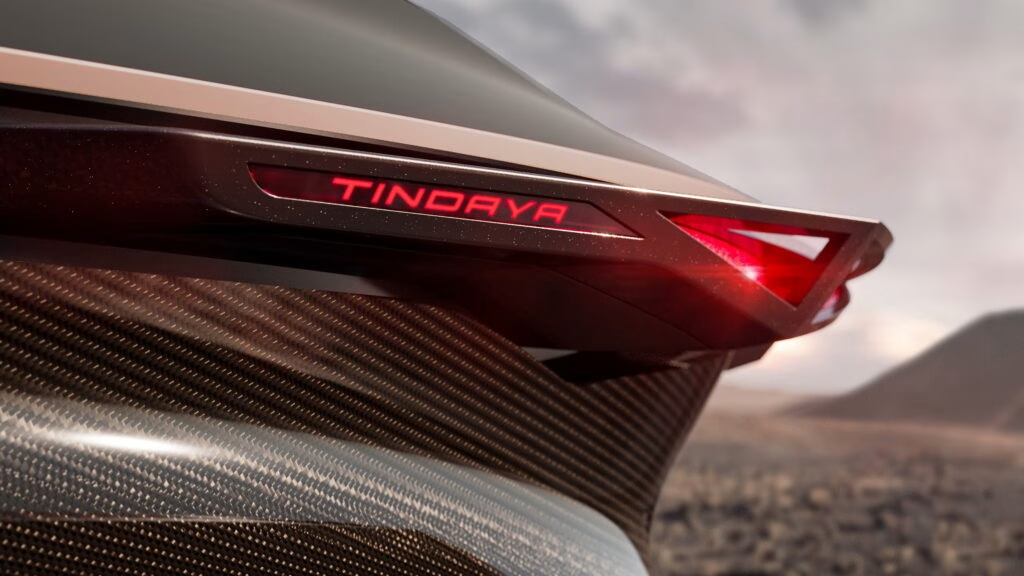What Makes the Cupra Tindaya Concept Stand Out at the IAA Mobility Show?
Cupra’s Tindaya concept is about to steal the spotlight at the IAA Mobility Show in Munich, and not just because of its dramatic unveiling date—September 8. This isn’t your typical concept car reveal. Instead, Cupra is using the Tindaya to signal a bold new direction in design, one that fuses emotion with cutting-edge technology. The brand calls it the perfect symbiosis between human and machine, and from the early teasers, it’s clear they’re not just tossing around buzzwords.
Why Is the Tindaya Named After a Volcanic Mountain?
Names matter, especially in the world of concept cars, where every detail is loaded with meaning. Tindaya takes its name from a volcanic mountain on Fuerteventura, one of the Canary Islands. The symbolism is hard to miss—raw, elemental power meets sculpted artistry. In Cupra’s CGI teaser, an asteroid crashes into volcanic rock, carving out the Tindaya name. It’s a not-so-subtle nod to the idea of forging something new from the earth’s core, and it sets the stage for a car that’s all about transformation.
What Can We Tell from the First Design Teasers?
Cupra has been careful not to give away too much, but the details they’ve shared are enough to get enthusiasts buzzing. The rear of the Tindaya features slim, protruding taillights that stretch into the profile, with illuminated Tindaya lettering—think of it as a signature that’s impossible to miss at night. The rear fenders are sculpted and finished in a glossy carbon-style texture, while copper accents and a matte upper body add a layer of sophistication. The overall vibe? Futuristic, but with a warmth that’s often missing from tech-heavy concepts.
The teasers don’t confirm the body style, but the smart money is on a coupe-SUV or a sporty crossover. Earlier video snippets revealed a cockpit with an illuminated diamond-shaped structure and ribbed textures, hinting at a cabin that’s just as daring as the exterior.
How Does Cupra’s New Design Language Blend Human and Machine?
The Tindaya’s design theme is “No Drivers, No Cupra.” Translation: this isn’t a robotaxi or an autonomous pod. Instead, Cupra is doubling down on the driver’s experience, promising a car that’s as engaging as it is advanced. The brand talks about a “perfect symbiosis between human and machine,” which likely means a digital interface that feels intuitive rather than overwhelming.
This approach isn’t just marketing fluff. According to a 2023 report by McKinsey, 60% of consumers say that a car’s digital experience is now as important as its driving dynamics. Cupra seems to have taken that to heart, aiming for a cockpit that enhances the driver’s emotions rather than distracting from the road.
Is the Tindaya Concept Fully Electric and Sporty?
Cupra hasn’t spilled the beans on the Tindaya’s powertrain, but all signs point to a fully electric setup. The brand is clear about one thing: this concept is built for driving enthusiasts. They describe it as delivering “the maximum expression of driver focus, while offering a unique experience, enhancing the driver’s emotions.” That’s a tall order in the EV world, where instant torque is easy, but true engagement is rare.
If Cupra pulls this off, it could set a new benchmark for sporty electric crossovers—a segment that’s heating up fast, with global EV sales projected to hit 17 million units in 2024 according to the International Energy Agency.
How Does the Tindaya Fit into Cupra’s Broader EV Strategy?
The Tindaya isn’t the only star at Cupra’s IAA stand. The company is also showcasing a near-production prototype of the Cupra Raval, a fully electric hatchback that shares its platform with the upcoming VW ID.2all and Skoda Epiq. The Raval is expected to launch in 2026 as Cupra’s entry-level EV, signaling the brand’s commitment to electrification across the board.
By positioning the Tindaya as a design and technology halo, Cupra is making it clear: they’re not just following the EV trend—they’re aiming to lead it, especially when it comes to blending performance with digital innovation.
What’s the Real-World Impact for Drivers and Enthusiasts?
For drivers, the Tindaya concept is more than just a showpiece. It’s a preview of what’s coming to the streets in the next few years: cars that don’t force you to choose between emotion and technology, but instead offer both in spades. Imagine a cockpit that responds to your mood, materials that feel as good as they look, and a driving experience that’s as engaging as anything with a combustion engine.
The big takeaway? The future of driving isn’t about perfection—it’s about smarter adjustments. Start with one change this week, and you’ll likely spot the difference by month’s end.

